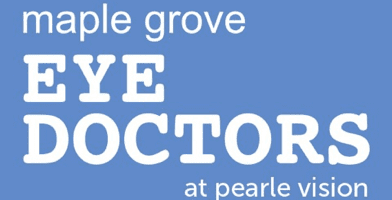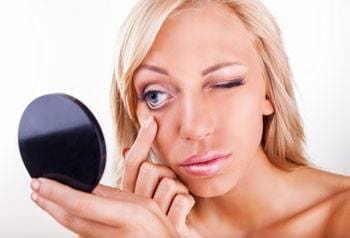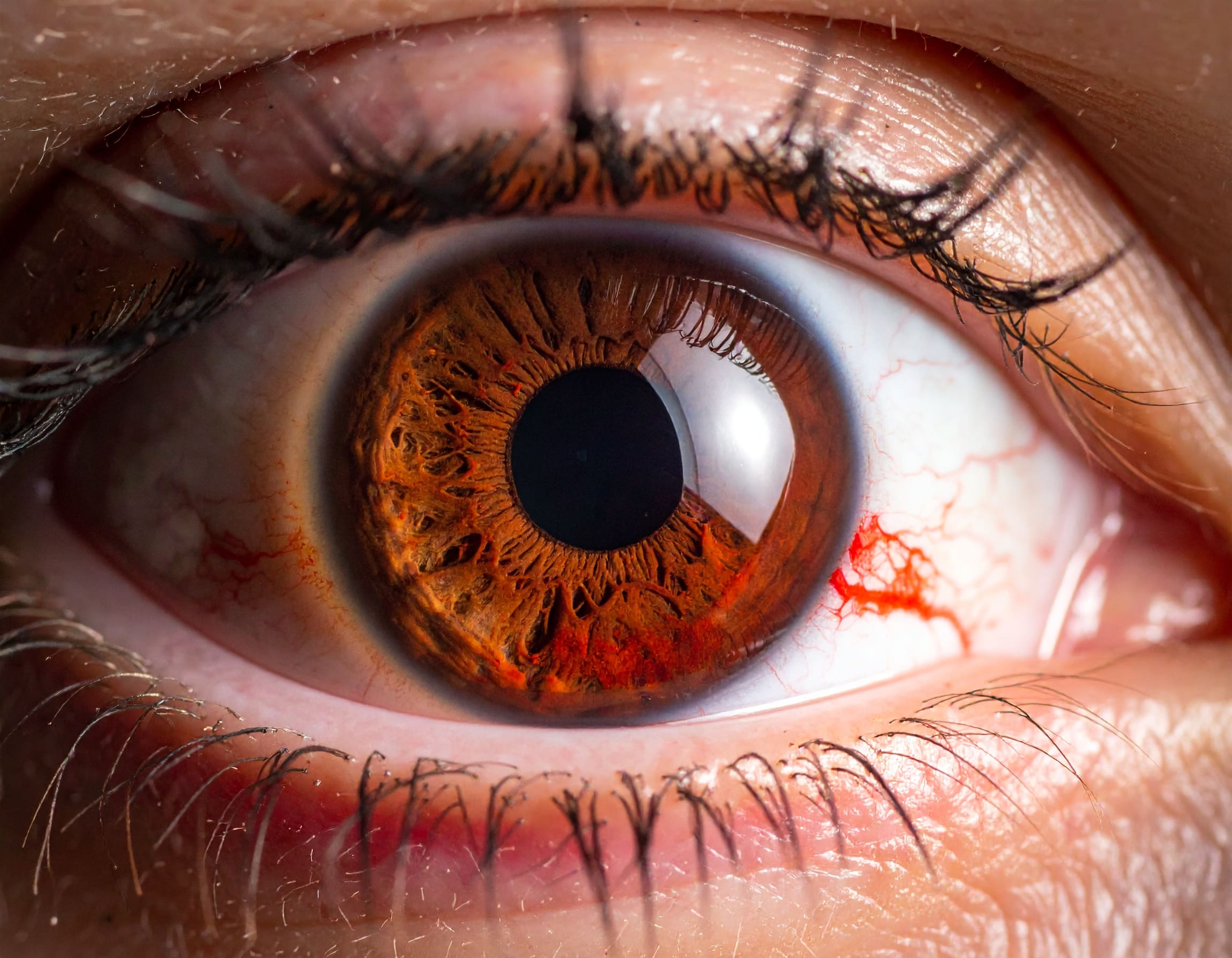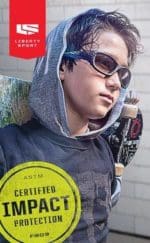Blue light is everywhere.
Sunlight is the main source of blue light, and being outdoors during daylight is where most of us get most of our exposure to it. But there are also many man-made, indoor sources of blue light, including fluorescent and LED lighting and flat-screen televisions.
Most notably, the display screens of computers, electronic notebooks, smartphones and other digital devices emit significant amounts of blue light.
The amount of HEV light these devices emit is only a fraction of that emitted by the sun. But the amount of time people spend using these devices and the proximity of these screens to the user’s face have many eye doctors and other health care professionals concerned about possible long-term effects of blue light on eye health, especially now during Covid-19 when everyone is spending so much more time on their digital devices.
2. HEV light rays make the sky look blue.
The short-wavelength, high-energy light rays on the blue end of the visible light spectrum scatter more easily than other visible light rays when they strike air and water molecules in the atmosphere. The higher degree of scattering of these rays is what makes a cloudless sky look blue.
3. The eye is not very good at blocking blue light.
Anterior structures of the adult human eye (the cornea and lens) are very effective at blocking UV rays from reaching the light-sensitive retina at the back of the eyeball. On the other hand, virtually all visible blue light passes through the cornea and lens and reaches the retina.
Blue light exposure may increase the risk of macular degeneration which can lead to permanent vision loss. The fact that blue light penetrates all the way to the retina (the inner lining of the back of the eye) is important, because laboratory studies have shown that too much exposure to blue light can damage light-sensitive cells in the retina.
4. Blue light contributes to digital eye strain.
Because short-wavelength, high energy blue light scatters more easily than other visible light, it is not as easily focused. When you’re looking at computer screens and other digital devices that emit significant amounts of blue light, this unfocused visual “noise” reduces contrast and can contribute to digital eye strain.
Research has shown that lenses that block blue light with wavelengths less than 450 nm (blue-violet light) increase contrast significantly. Therefore, computer glasses with yellow-tinted lenses may increase comfort when you’re viewing digital devices for extended periods of time.
5. Blue light protection may be even more important after cataract surgery.
The lens in the adult human eye blocks nearly 100 percent of the sun’s UV rays. As part of the normal aging process, the eye’s natural lens eventually blocks some short-wavelength blue light as well — the type of blue light most likely to cause damage to the retina and lead to macular degeneration and vision loss.After cataract surgery you might benefit from eyeglasses that have lenses with a special blue light filter — especially if you spend long hours in front of a computer screen or using other digital devices.
6. Should we be blocking all blue light? The answer is NO.
It’s well documented that some blue light exposure is essential for good health. Research has shown that high-energy visible light boosts alertness, helps memory and cognitive function and elevates mood.
In fact, something called light therapy is used to treat seasonal affective disorder (SAD) — a type of depression that’s related to changes in seasons, with symptoms usually beginning in the fall and continuing through winter.
The light sources for this therapy emit bright white light that contains a significant amount of HEV blue light rays.
Also, blue light is very important in regulating circadian rhythm — the body’s natural wakefulness and sleep cycle. Exposure to blue light during daytime hours helps maintain a healthful circadian rhythm.
But too much blue light late at night (reading a novel on a tablet computer or e-reader at bedtime, for example) can disrupt this cycle, potentially causing sleepless nights and daytime fatigue.
Blue light filters and protective eyewear
If you are using your phone constantly — especially if you use it primarily for texting, e-mailing and web browsing — a convenient way to reduce your blue light exposure is to use a blue light filter. We know our children are using digital devices more often and many experience eye fatigue and headaches from the blue light emitted, and may also have trouble falling asleep bc of overuse at night. Purchasing blue light glasses at a retailer who is not an eyecare provider is not a good idea for a few reasons that can affect comfort and compliance for wearing them: poor quality lenses, ill fitting frames, poor quality blue light protection, and no anti-reflective coating.
Our 14 year old grandson, Jayden  , started experiencing headaches since he started distance learning in addition to the video gaming time; he doesn’t have a correction so we put him into some plano blue light protective eyewear that fits properly and has a good quality lens, so he is comfortable wearing them.
, started experiencing headaches since he started distance learning in addition to the video gaming time; he doesn’t have a correction so we put him into some plano blue light protective eyewear that fits properly and has a good quality lens, so he is comfortable wearing them.

These filters are available for smartphones, tablets, and computer screens and prevent significant amounts of blue light emitted from these devices from reaching your eyes without affecting the visibility of the display. Some are made with thin tempered glass that also protects your device’s screen from scratches.
Examples of blue light filters for digital devices include: Eyesafe (Health-E), iLLumiShield, RetinaShield (Tech Armor), Retina Armor (Tektide), Frabicon and Cyxus.
As mentioned above, computer glasses also can be helpful to reduce blue light exposure from computers and other digital devices. These special-purpose glasses are available with or without an eyeglass RX, if you have no need for vision correction or if you routinely wear contact lenses to correct your eyesight.
Computer glasses can be specially prescribed to optimize your vision specifically for the distance from which you view your devices.
If you have presbyopia and routinely wear progressive lenses or bifocals, prescription computer glasses with single vision lenses give you the additional benefit of a much larger field of view for seeing your entire computer screen clearly. (Keep in mind, though, that this type of computer eyewear is exclusively for seeing objects within arm’s length and cannot be worn for driving or other distance vision needs.) In our practice our doctors routinely recommend adding a blue light filter to rx lenses, especially in computer glasses.
Also, a number of lens manufacturers have introduced special glare-reducing anti reflective coatings that also block blue light from both natural sunlight and digital devices.
The new Transitions Signature Gen 8 lens provides seamless protection from UV and blue light both indoors and out and also automatically darken in response to UV rays outdoors to increase comfort and reduce glare. This lens now is darker outside and clear inside.
Schedule an Eye Exam today with one of our 6 full time optometrists.






